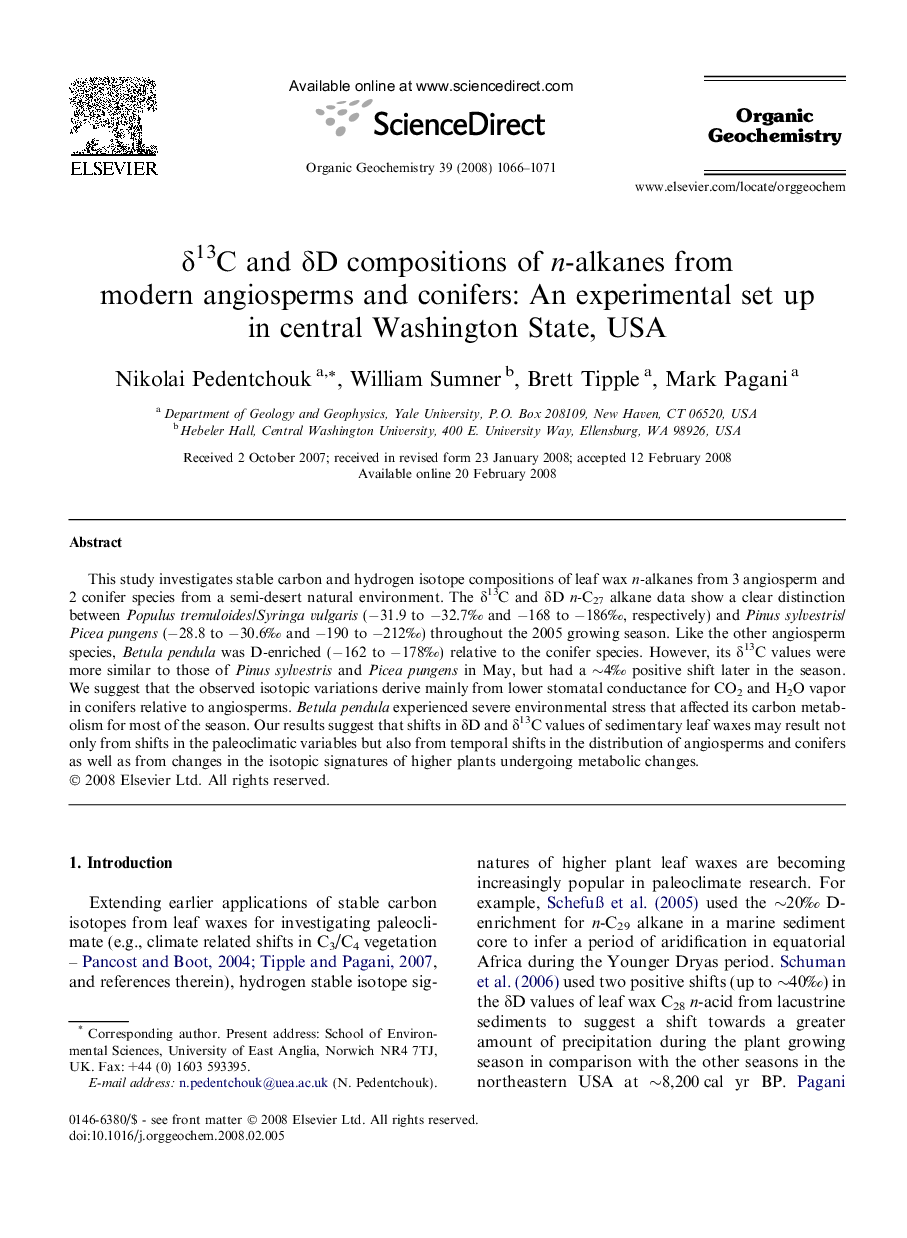| Article ID | Journal | Published Year | Pages | File Type |
|---|---|---|---|---|
| 5162002 | Organic Geochemistry | 2008 | 6 Pages |
Abstract
This study investigates stable carbon and hydrogen isotope compositions of leaf wax n-alkanes from 3 angiosperm and 2 conifer species from a semi-desert natural environment. The δ13C and δD n-C27 alkane data show a clear distinction between Populus tremuloides/Syringa vulgaris (â31.9 to â32.7â° and â168 to â186â°, respectively) and Pinus sylvestris/Picea pungens (â28.8 to â30.6â° and â190 to â212â°) throughout the 2005 growing season. Like the other angiosperm species, Betula pendula was D-enriched (â162 to â178â°) relative to the conifer species. However, its δ13C values were more similar to those of Pinus sylvestris and Picea pungens in May, but had a â¼4â° positive shift later in the season. We suggest that the observed isotopic variations derive mainly from lower stomatal conductance for CO2 and H2O vapor in conifers relative to angiosperms. Betula pendula experienced severe environmental stress that affected its carbon metabolism for most of the season. Our results suggest that shifts in δD and δ13C values of sedimentary leaf waxes may result not only from shifts in the paleoclimatic variables but also from temporal shifts in the distribution of angiosperms and conifers as well as from changes in the isotopic signatures of higher plants undergoing metabolic changes.
Related Topics
Physical Sciences and Engineering
Chemistry
Organic Chemistry
Authors
Nikolai Pedentchouk, William Sumner, Brett Tipple, Mark Pagani,
